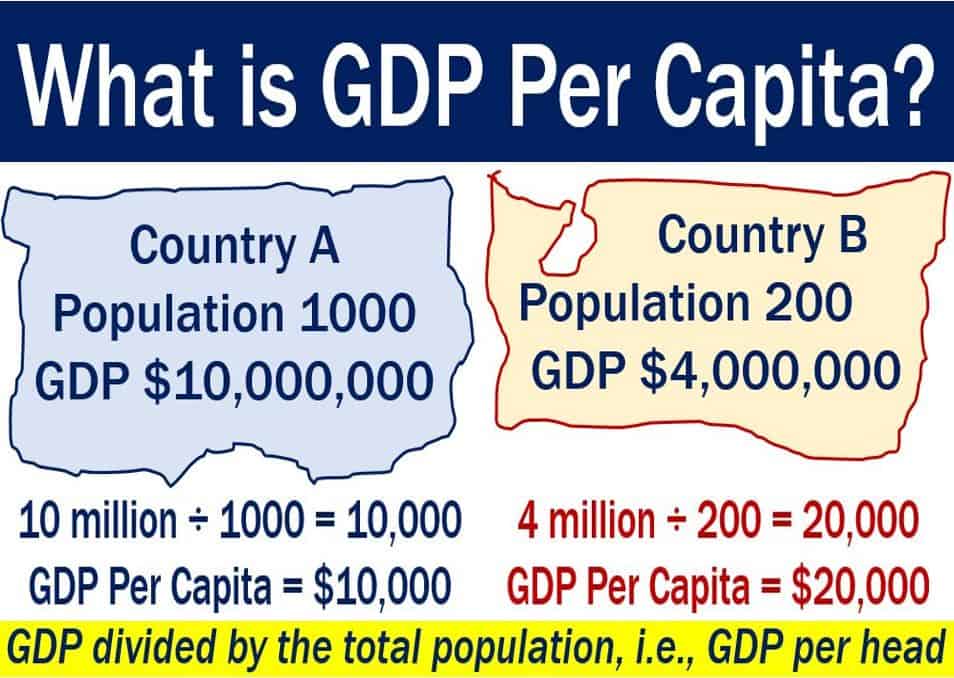GDP per capita is a measure of average output per person in a country. It means GDP per head of the population. To get the GDP per capita figure, we divide the country’s GDP by its total population. Economists say that this figure is more relevant than just GDP because it shows the relative performance of an economy.
Put simply; GDP per capita accounts for the population of a country, while GDP does not. The per capita figure tells us how prosperous the citizens of a country are.
GDP stands for Gross Domestic Product. Per capita is a Latin term that means ‘for each person’ or ‘per head.’
According to the United Nations, we obtain levels of GDP per capita by:
“Dividing GDP at current market prices by the population. A variation of the indicator could be the growth in real GDP per capita, which is derived as the percentage change in real GDP divided by the population.”
If a country’s GDP grew by 4% one year, but its population also grew by 4%, what happened to its GDP per capita? It remained the same. That is why we should not compare countries just by looking at GDP figures.

GDP per capita comparisons
Even though per capita figures give us more relevant data than simply GDP figures, they can be misleading.
For example, imagine Country A’s per capita figure is $10,000, and Country B’s is $12,000. Does this mean that people in Country B have a higher standard of living than those in Country A? Perhaps, but not necessarily.
If we work out how much a basket of things costs in each country, we would have a better idea. Let’s suppose a basket of basic goods and services for one year costs $8,000 in Country A and $11,900 in Country B.
Country B citizens have only $100 left after paying for their basket of basic things, while those in Country A have $2000. Therefore, Country A citizens have a better standard of living than those in Country B.
When we include the price of a basket of similar goods, we call it GDP per capita using PPP. PPP stands for Purchasing Power Parity.
According to Market Business News’ article on PPP:
“Purchasing power parity (PPP) is an economic term that calculates the relative value of different currencies.”
Switzerland’s and China’s GDPs are $59 billion and $11.2 trillion respectively. However, Switzerland’s GDP per capita is $78,812, while that of China is only $8,123. Therefore, Swiss people enjoy a much higher standard of living than their Chinese counterparts, regardless of the size of China’s GDP.
China’s GDP is much larger than Switzerland because it has more people.
Life expectancy
Countries with a high GDP per head have a considerably longer life expectancy than their poorer counterparts.
In Japan, for example, life expectancy today is 84 years. In Swaziland, on the other hand, it is only 47 years. Japan’s GDP per capita is much larger than Swaziland’s.
Japan’s GDP per head is $39,000, compared to Swaziland’s $2,700.
